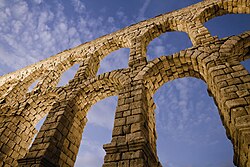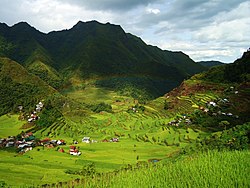Wiki Loves Monuments announces 2012 winner



Photo of Tomb of Safdarjung wins monument contest
The global jury of Wiki Loves Monuments (WLM), the world’s largest photo contest, announced its results on 3 December.
The contest, held in September in 35 countries across the globe, dwarfed the quantitative results of its European predecessor of 2011, with more than 350,000 submissions this year against 168,000 last round. However, European countries still dominated; Poland led the field with more than 51,400 files. Spain, which had an early lead thanks to submissions from Catalonia, came second, with 39,500 files, before Germany with 34,000 and Ukraine with 33,000. France made the fifth place with 27,000. The first non-European country in the quantitative ranking is the US on the sixth place. While volunteer coordinator Smallbones had hoped for 50,000 submissions in September, the US community managed to upload only 22,000 in the framework of the contest.
The global jury considered 324 submissions that had scored highly in 33 earlier national contests. The winning submission is from India and shows the tomb of a prominent 18th-century official, Safdarjung. Safdarjung was born as Muhammad Muqim in a region of historic Persia (today's Iran) and later immigrated to the Indian Mughal Empire, where he became an influential court politician and prime minister to Muhammad Shah. His tomb, the last symbol of late imperial architecture, was constructed in 1753–54 by his son, Shuja-ud-Daula. The dynasty Safdarjung served fell in the year the monument was finished: Imad-ul-Mulk—a nobleman the courtier had promoted in the past—overturned, imprisoned, and blinded Muhammad Shah's son and successor, the weak Emperor Ahmad Shah Bahadur, in June 1754 after defeating Safdarjung, who died soon after, aged 46.
The second and third places came from Spain and the Philippines, respectively; thus two of the three leading submissions came from beyond the scope of last year's European-only contest. In wider qualitative terms, more than 1,500 photos uploaded as part of the competition have been promoted to "quality" files on Commons. 30 have been promoted to "valued" status, and 35 to featured status.
While no new detailed participation statistical analysis has been published so far, the three winning accounts made their first significant contribution to the projects by taking part in the photo contest. Last year, some 70% of the 5000 participants made their first edit during the competition month. Statistics on the upload distribution have been published on the Toolserver. WLM 2012, which explicitly aimed at increasing the participation of new users in Wikipedia and Commons, provided new software tools to minimize barriers to competition.
However, the jury could not reach the winner, Pranav Singh. Because he did not confirm his contact data, the prize—a trip to the upcoming Wikimania in Hong Kong in 2013—was given to David Corral Gadea, the second-ranked photographer.
In brief
- Franamax: The Signpost sadly reports that long-time Wikipedian Franamax died at the age of 51 on Sunday 25 November. Francis, who was born in Ontario and moved to Vancouver six years ago, joined the English Wikipedia in August 2007. More than 60 editors have left condolences on his talk page, and a short obituary has been published online. We give our best wishes to all who knew him.
- Fundraising controversy: The yearly controversy over the design of the fundraising banners, which this year have come in the form of a bright yellow expandable bar on the top of all Wikipedia pages, is currently playing out over the mailing lists. Much of the ire is reserved for when the banners expand, as they expand over article text when a mouse simply scrolls over them. These banners, though, are currently only being shown to new visitors; they will be shown to everyone again starting on 26 December.
- Arbitration elections: The English Wikipedia’s Arbitration Committee elections are currently open, and will remain so until 10 December. There are currently 21 candidates for eight vacant seats.
- Creative Commons comes of age: Creative Commons licenses, which power Wikipedia and the other Wikimedia projects, turns 10 on December 16. The Creative Commons foundation, the NPO developing and promoting the licenses, will be hosting a number of events around the globe this month.
- MediaWiki gender outreach: Until Friday, interested community members can select their preferred candidates for a new MediaWiki outreach program aiming to increase participation by women in the tech community.
- Wikimania scholarship committee: The committee in charge of awarding scholarships for the upcoming Wikimania has published a call for reviewer participation.
- Finance committee recommendations approved: The WMF Board of Trustees has voted in favor of the FDC's recommendations and requested that the WMF staff implement them appropriately.


Discuss this story
A small comment (nice story :) ): to the best of my knowledge GLAM institutions didn't submit images. You are perhaps confusing images /of/ GLAM institutions that are also a monument (which is a special category this year) and images /by/ GLAM institutions? effeietsanders 19:11, 5 December 2012 (UTC)[reply]
It's unfortunate such a great image is constrained into a 180px by 180px thumbnail in a gallery. I suspect most readers will not notice the photo's quality, unless clicked on, which very few will do. Maybe there could be a larger image preview when hovering over an image in a gallery. As it stands now, nobody will be clicking on a 10 images in a gallery. It might be even better to have an Images tab, next to Read/Edit. Just some thoughts. Tomb of Safdarjung. 24.242.195.208 (talk) 17:05, 6 December 2012 (UTC)[reply]